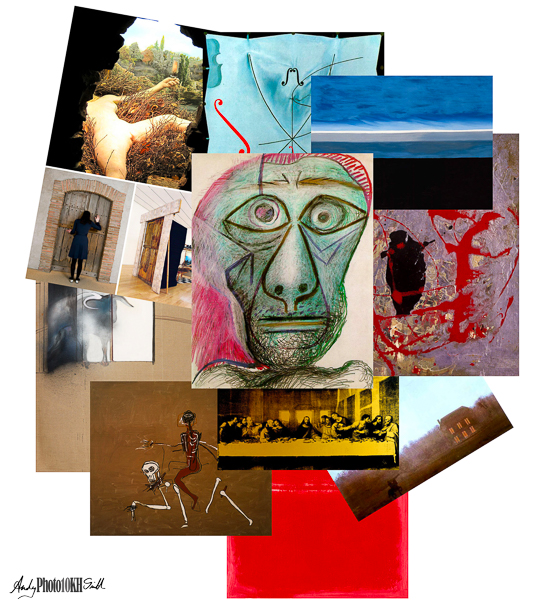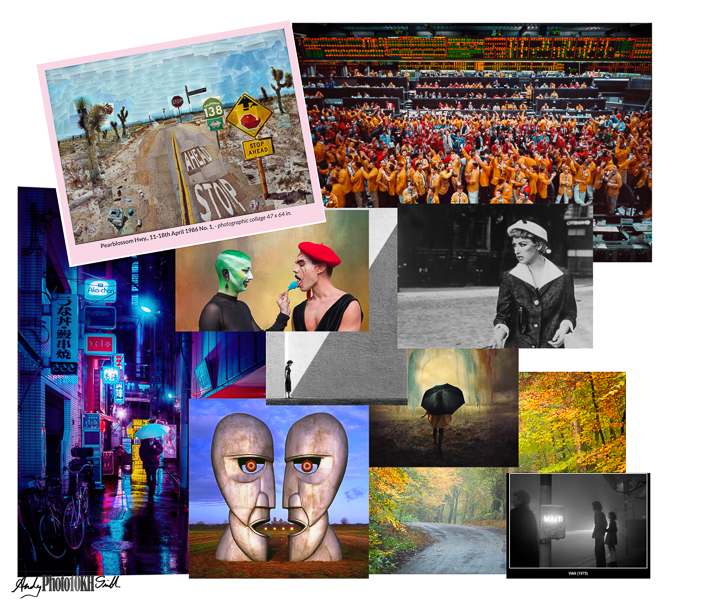
A quick run through of some of my most significant influences.
Objective and Structure
Both learning and innovation are essentially a combination of copying, combining ideas and experimenting.
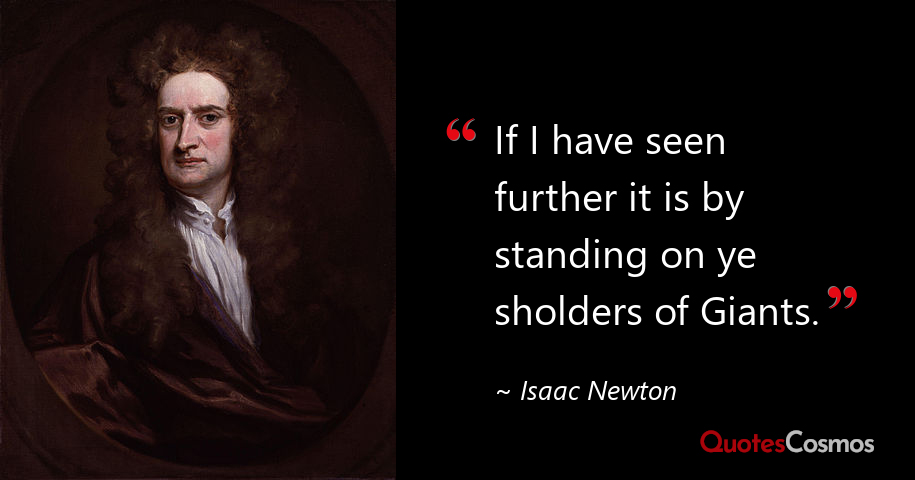
My giants fall into three categories:
- Photographers I know: the people I interact with at at photography clubs and elsewhere. Often very experienced photographers who generously share their knowledge and provide feedback on the work I’m doing. There are many in this category, particularly from the Amersham Photographic Society and the associated PiC group, but particularly worthy of mention are Vic Attfield, Paul Mitchell and Yin Wong.
Almost in this category, and certainly a giant, is Sean Tucker who I have met twice and whose YouTubes I have followed voraciously for the past 5 years - Photographers I admire from a distance, most notably:
- Brooke Shaden
- Storm Thorgerson
- Hiroshi Sugimoto
- Andreas Gursky
- Fan Ho
- Liam Wong – Cyberpunk
- Cindy Sherman
- David Hockney – Joiners
- Other visual artists who have inspired me, including:
Photographers I know
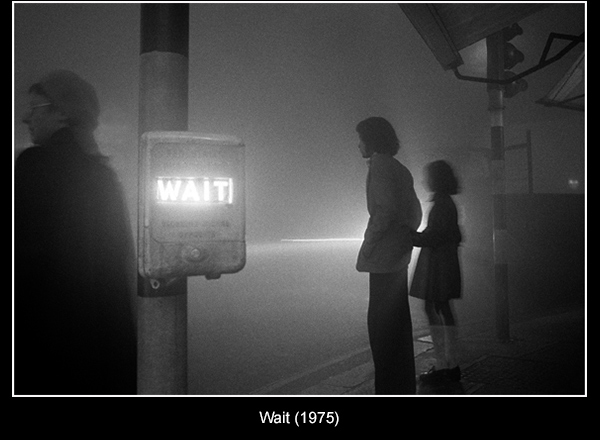
Vic Attfield FRPS MPAGB
Undisputed master of photography
Former doyen of the RPS; current doyen of the London Salon, the Amersham Photographic Society and particularly the Wednesday coffee club.
The PAGB devoted a whole edition of it’s quarterly magazine to a retrospective of Vic’s work.
He still found time to help me assemble an Associateship panel. See “Road to an Associateship in Landscape Photography“
Paul Mitchell FRPS
Former member of the Amersham Photographic Society. Major influence in landscape photography, particularly trees in Burnham Beeches and Stoke Common.
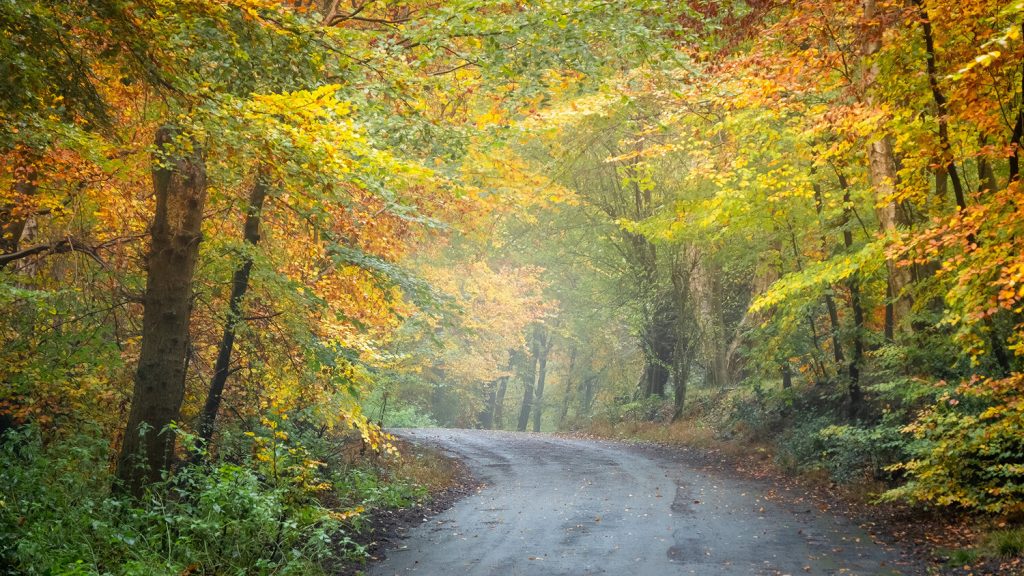
Paul was the chairman of the Landscape Photography Distinction panel for both my unsuccessful and successful submissions, and coached me over the line with on-2-one advice.
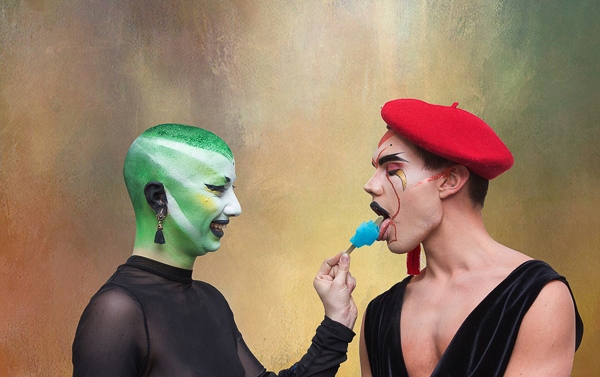
Yin Wong ARPS & EFIAP/ Diamond 1
Master of street portraiture where he interacts with the subject often persuading people he has never met before to move 100 yards or more to a position with a better background.
Yin and I have been shooting together on many occasions, for many years
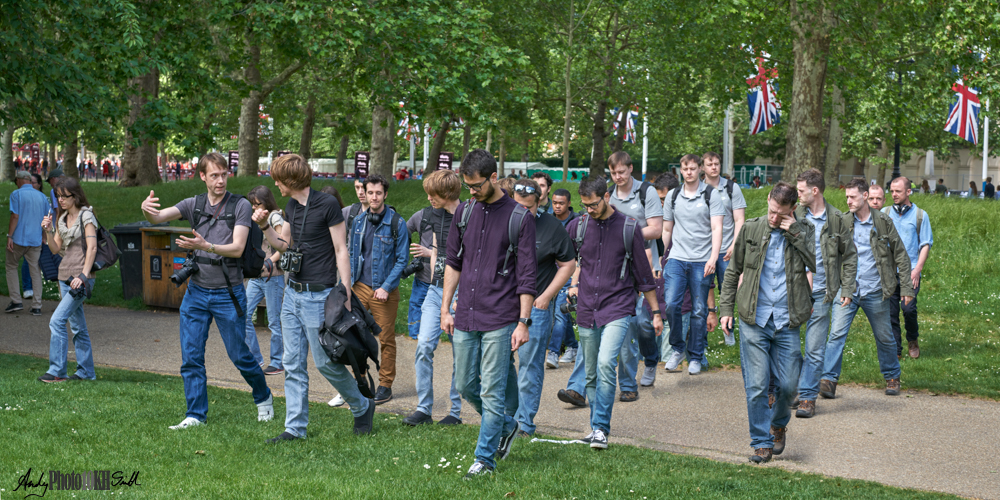
This journal contains countless references to his work and links to his YouTube videos. I admire both his photographic skill and life philosophy. I have met him twice.
Photographers I Admire from a Distance
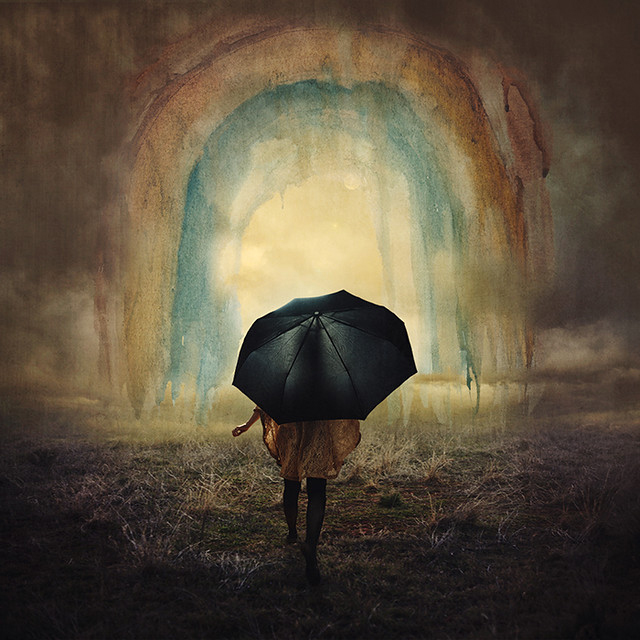
Brooke Shaden (b. 1987)
The number one google hit for “Surrealist photography” and a currently active producing inspiring imagery.
Left, “In Service to Joy”
Storm Thorgerson (1944 – 2013)
The surrealist photographer responsible for a number of album covers including the “Metal Heads” image from Pink Floyd’s “Division Bell” Album
“I like photography because it is a reality medium, unlike drawing which is unreal. I like to mess with reality… to bend reality. some of my works beg the question of is it real?”
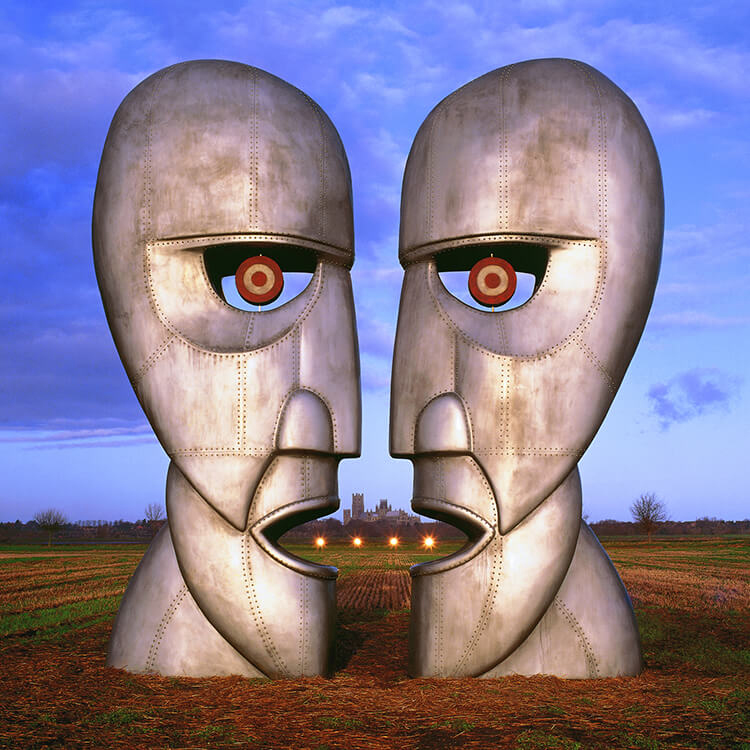
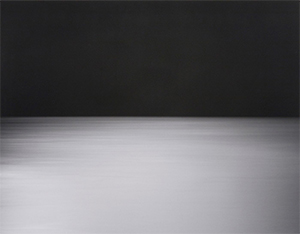
Hiroshi Sugimoto (b. 1948)
Famous minimalist seascape photography.
Breaks all the rules to create powerful images.
Andreas Gursky (b. 1955)
“Chicago Mercantile Exchange” right is a composite of a number of exposures to create the sense of activity that pervades the scene but could never be represented by a single shot.
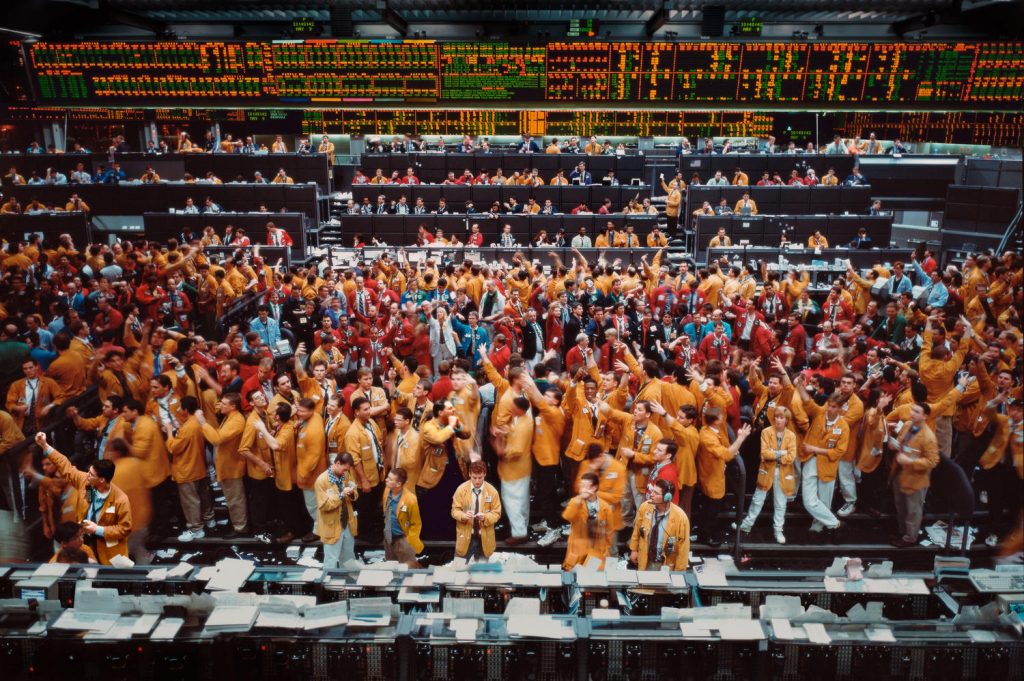
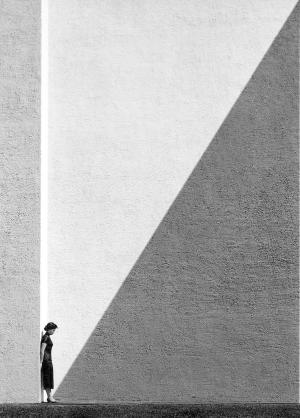
Fan Ho (1931 to 2016)
Pioneer of street photography and major influence on the style of Sean Tucker, featured above.
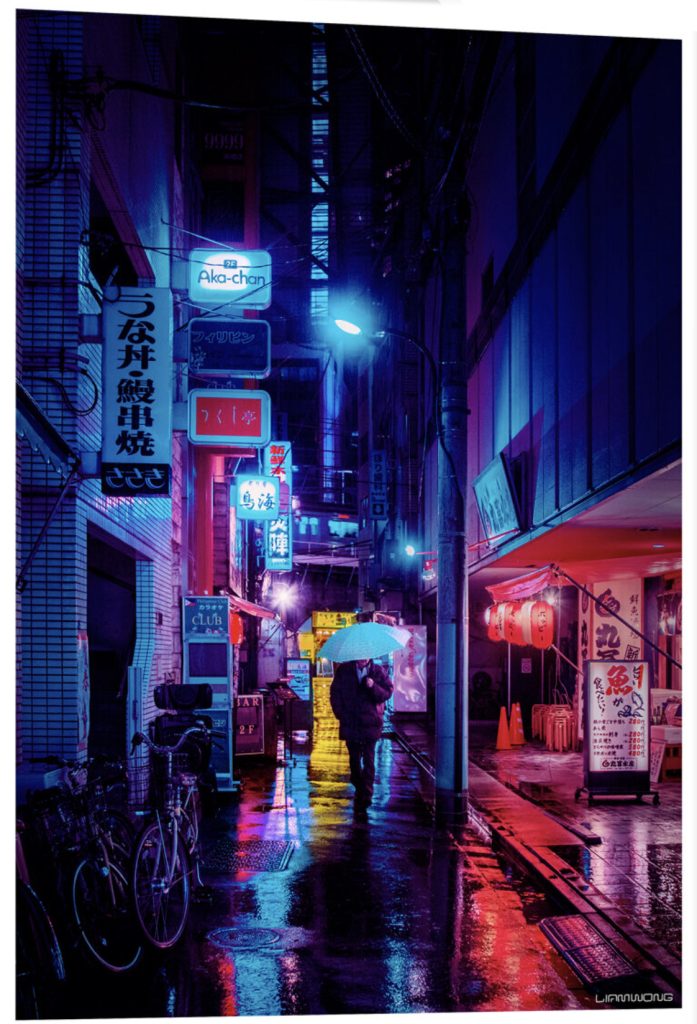
Liam Wong (b. 1988? – graduation from Dundee Uni. 2010)
Neo-noir, dystopian cyberpunk.
Dramatic settings with fabulous colours.
Cindy Sherman (b 1954)
Self-portraiture of imagined characters in 1970s films
Right, “Untitled Film Still #23”
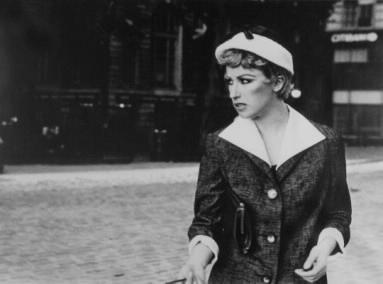
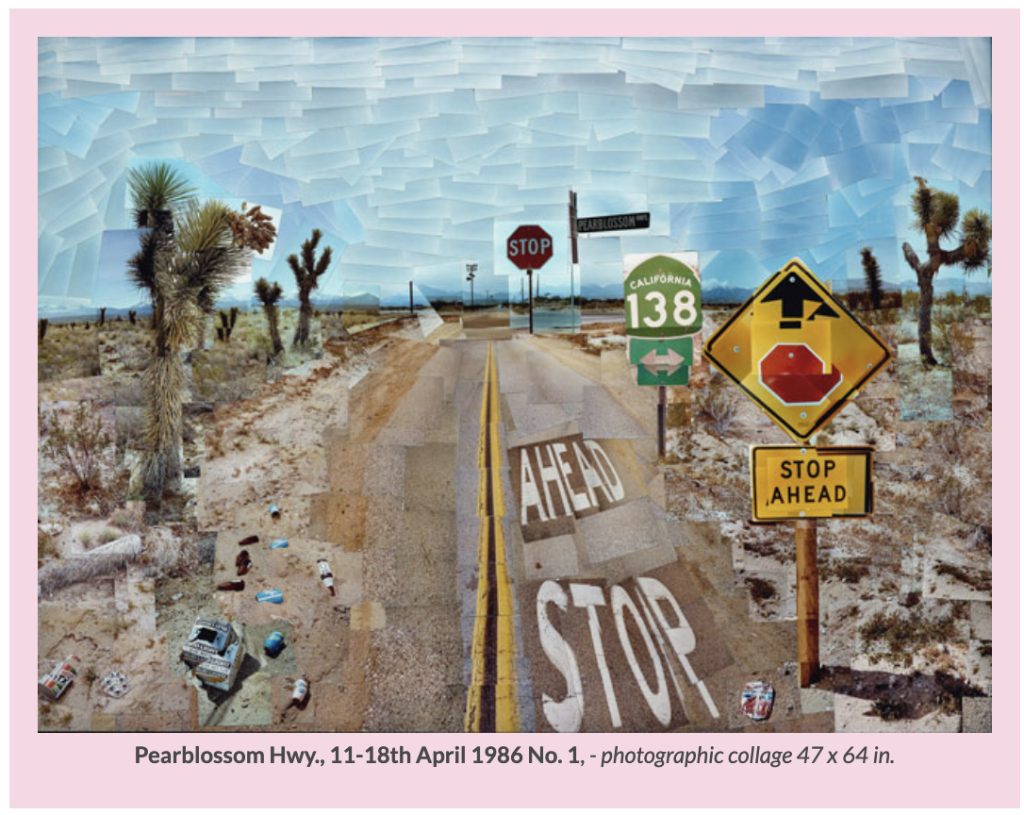
David Hockney (b. 1937)
Painter and photographer – British national treasure
I love the “joiner” style of collage, left
Other Visual Artists
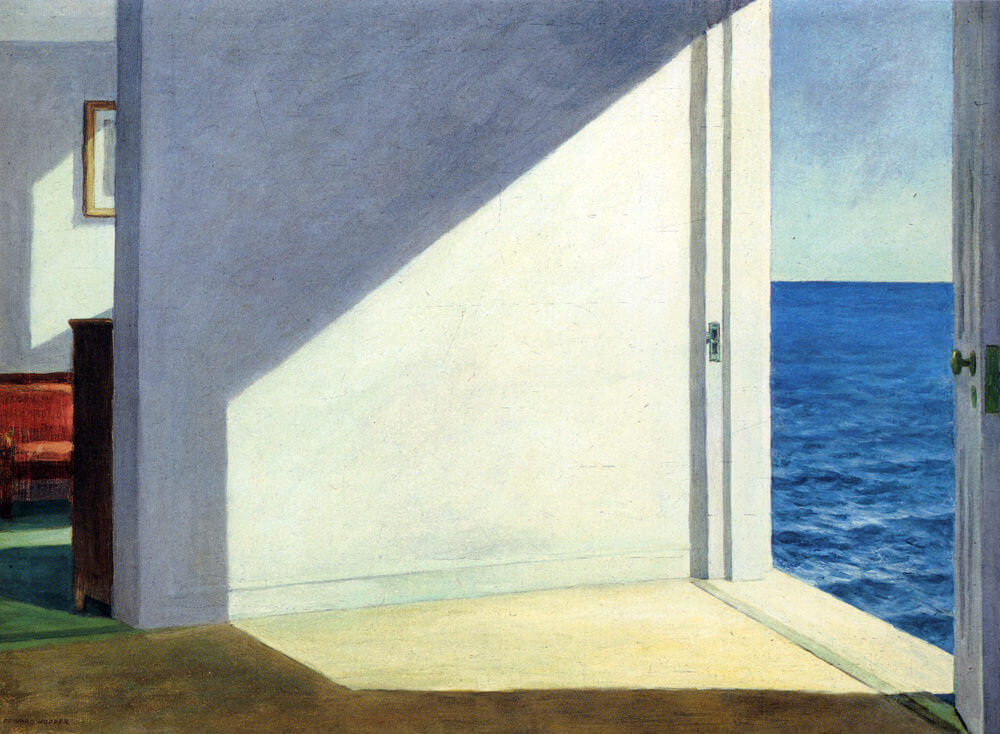
Edward Hopper (1882 to 1967) – “Rooms by the Sea”
My all time favourite picture – painted as a self-portrait. Quote carried by Hopper in his wallet:
“The beginning and the end of all literary (‘artistic’) activity is the reproduction of the world that surrounds me by means of the world that is in me, all things being grasped, related, recreated, moulded, and reconstructed in a personal form and an original manner.”
Johann von Goethe
René Magritte (1898 to 1967)
The artist I have most tried to emulate in both style and philosophy
“Son of Man” (1964), right, adds enigma by hiding the face:
“Everything we see hides another thing, we always want to see what is hidden by what we see, but it is impossible. Humans hide their secrets too well….”
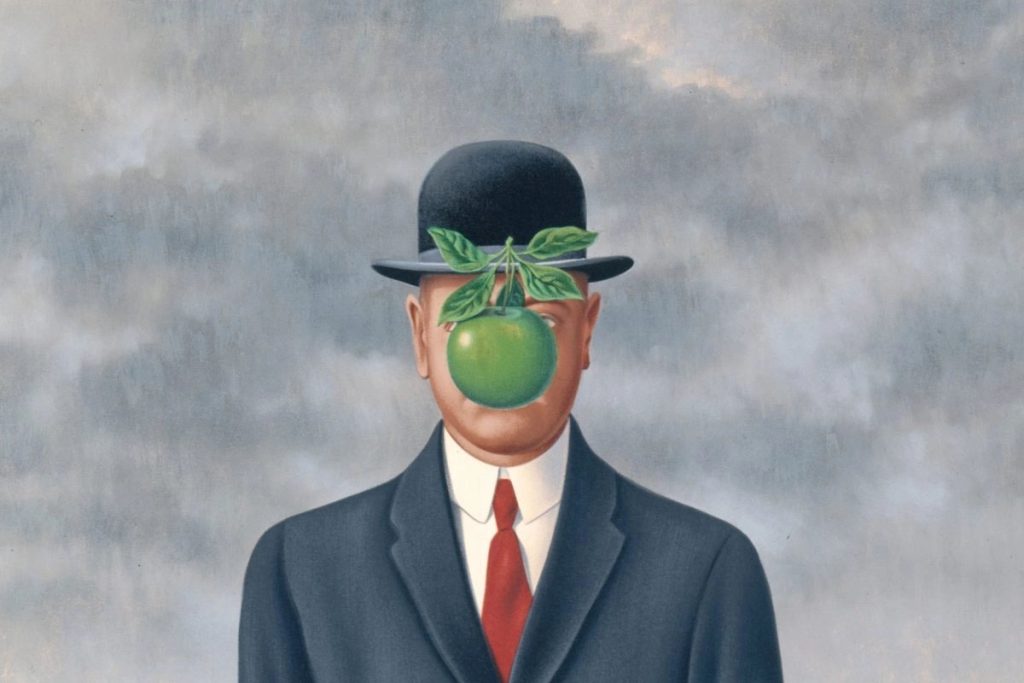
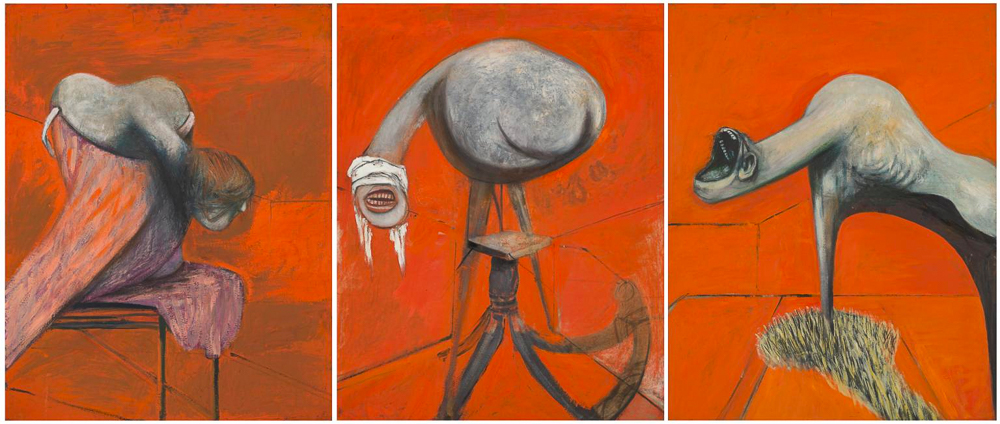
Francis Bacon’s, 1944, “Three Studies for Figures at the Base of a Crucifixion” first encountered by me on 22nd May 2019 in the Tate Britain. Shocking and captivating at the same time.
Pablo Picasso, 1907, “Les Demoiselles d’Avignon”
Arguably the first cubist painting, although Georges Braque deserves some credit, it broke new ground in the art world
I like the multidimensionality and abstraction of cubism, together with Picasso’s absorption of other styles and techniques such as African art and still life.
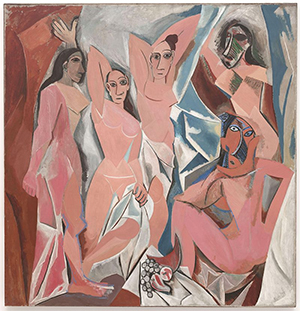
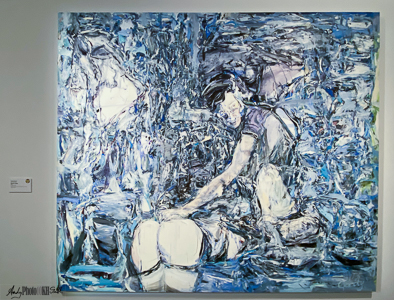
Cicily Brown, 1999, “Broken Lullaby” in the Denver Museum of Art
(photographed by me on 30th May 2023)
Haunting images combining objectivity with abstract expressionism.
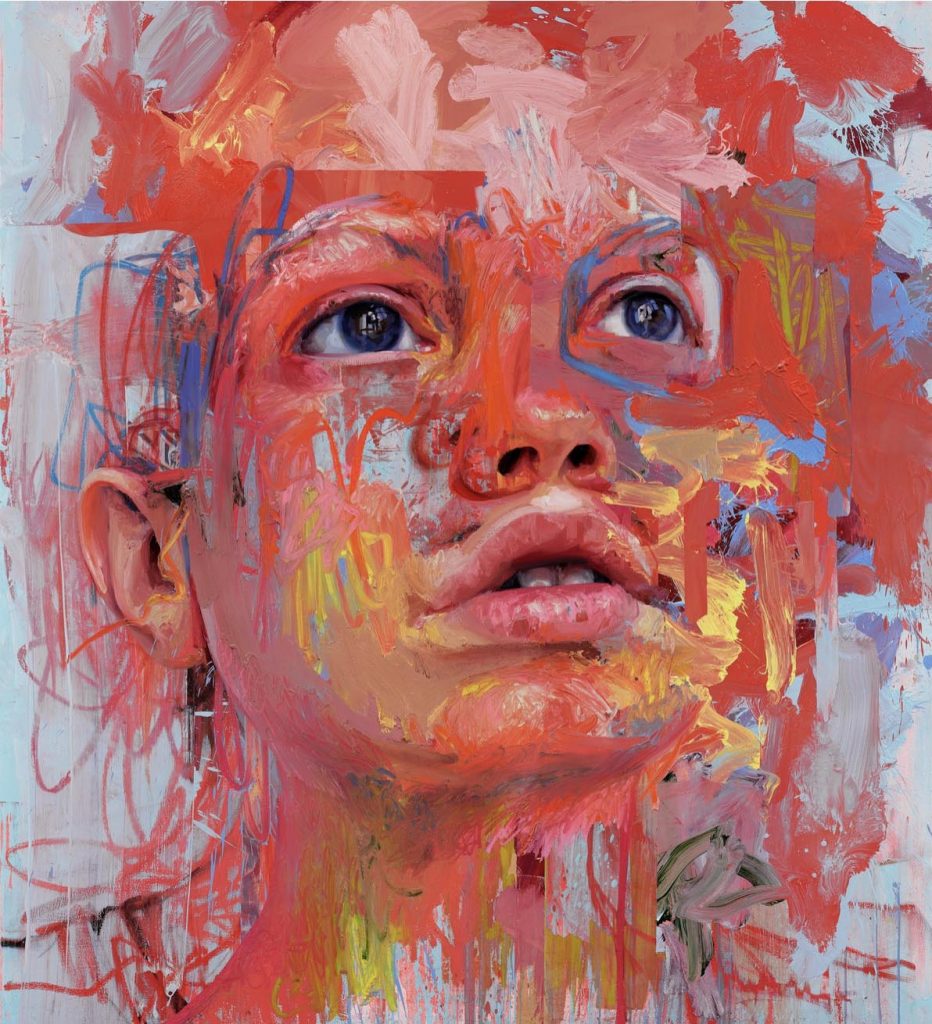
Jenny Saville (b. 1970), 2020, “Second Nature”
the combination of photorealism and abstract expressionism is widely copied by commercial artists
First discovered by me on 15th July 2021
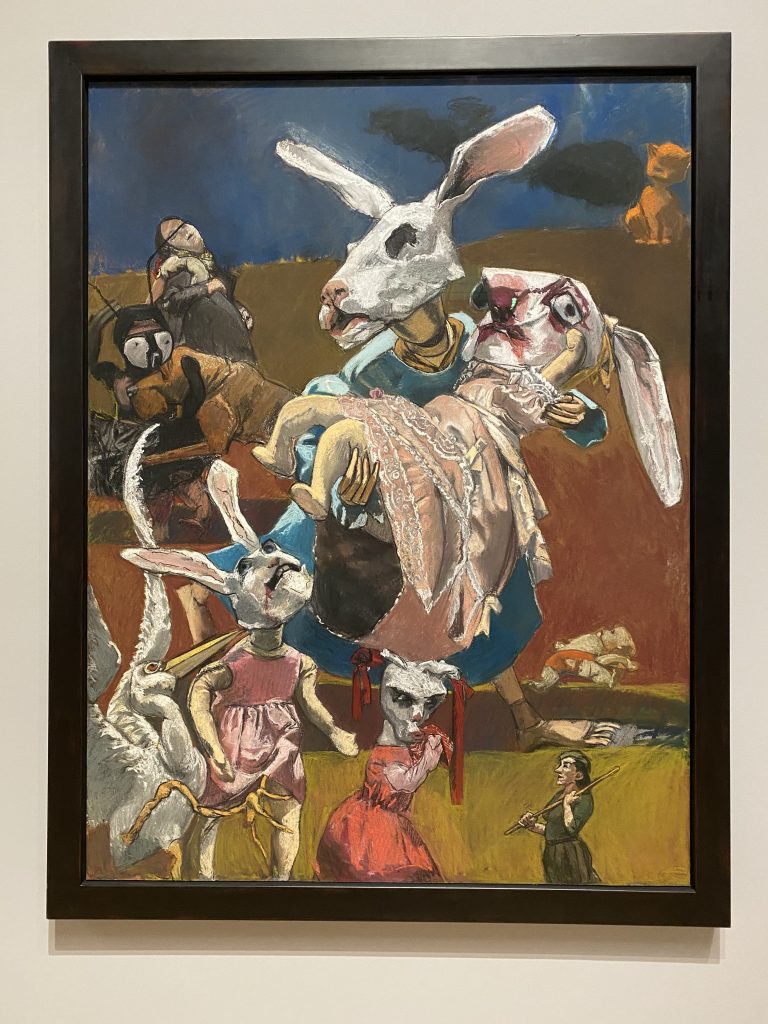
Paula Rego (1935 to 2022), 2003, “War”
Photographed by me at the Tate Britain’s exhibition on 21st September 2021
The figures are given rabbits’ heads to make them look more real in a horrific scene
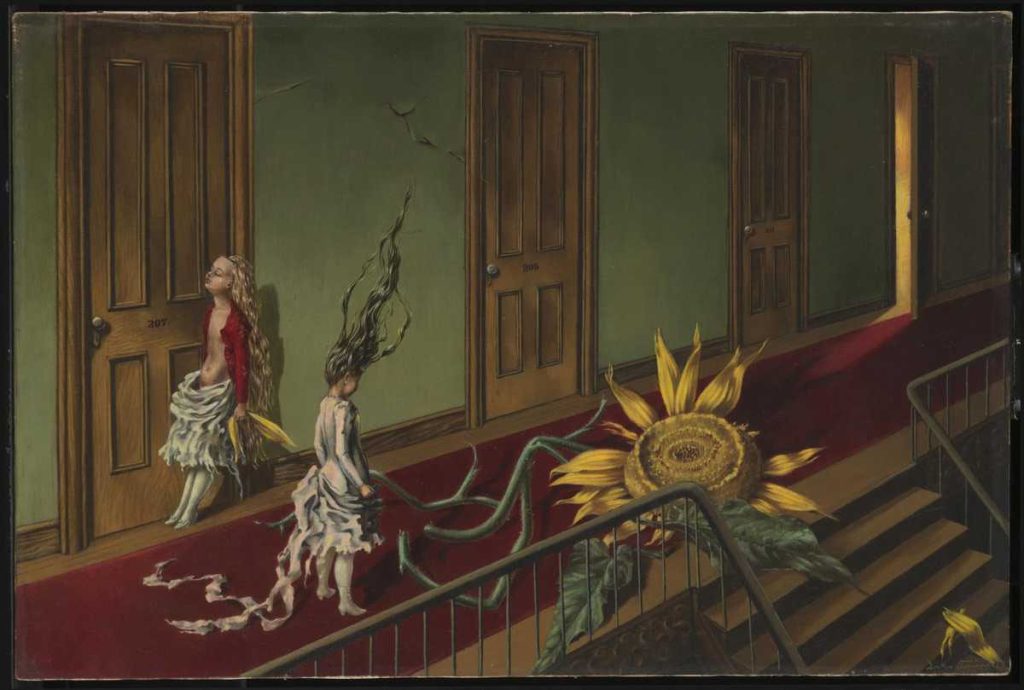
Dorothea Tanning (1910 to 2012), 1943, “Eine Kleine Nachtmusik”
Love the surrealist dreamscape and symbolism. Tanning married Max Ernst in 1946, in a double ceremony with Juliet Browner marrying Man Ray. [Ernst was married to Peggy Guggenheim when he met Tanning in New York; after his relationship with Leonora Carrington in Paris]. Although Ernst was more prominent amongst the Surrealists at the time, Tanning’s work is more accessible and enduring.
The sunflower, in this painting, apparently symbolises all the things that youth has to face and deal with, and in general represents a never ending battle with unknown forces. [However, sunflowers represent gratitude in England and for Van Gogh, devotion in Greece, and more recently hope and recovery in Japan]. The ragged clothes of both the girl and doll support this interpretation.
Mozart’s Serenade No. 13 for Strings in G Major with the same nickname, provided both the title and inspiration as Tanning and Ernst are known to have listened to Mozart as they worked.
She lived to be 101, hurrah.
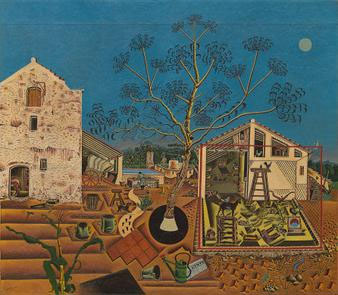
Jean Miró (1893 to1983), 1921-22, “The Farm”
Miró felt that this work, which took 9 months to paint was a summary of his entire life in the country
Work was bought by Ernest Hemingway for a few francs, before either of them were famous, who said: “It has in it all that you feel about Spain when you are there and all that you feel when you are away and cannot go there. No one else has been able to paint these two very opposing things.”
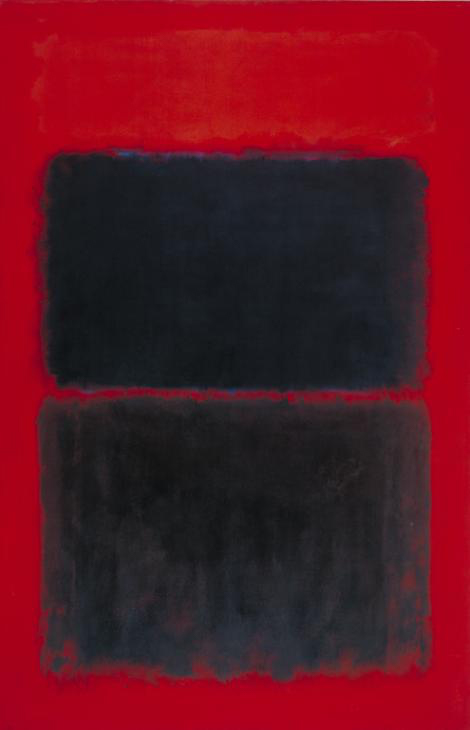
Mark Rothko (1903 to 1970)
1957, “Light Red Over Black”
His quote: “It is not a painting of an experience, it is the experience” defines his goal to raise painting to the level of poignancy of music or poetry.
I have learnt to understand and appreciate this work over the course of this project. The Tate Modern had a room dedicated to Rothko’s Seagram paintings which I visited on 24th November 2017. At the time, I found the experience utterly inaccessible.
Since 2017, I have visited the Tate’s Rothko collection many times and now see the works as objects of contemplation.
This meditative quality is what I was aiming to capture with my recent RPS Associateship panel.
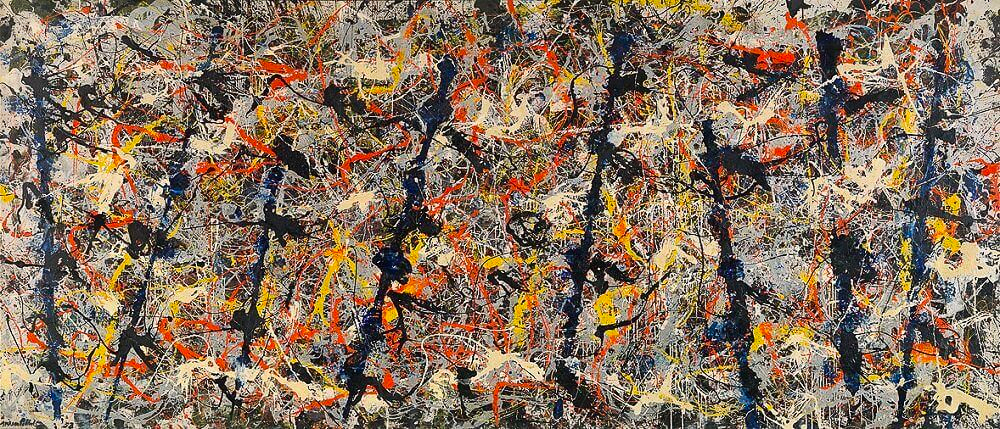
Jackson Pollock (1912 to 1956), 1952, “Blue Poles”
Goal was pure abstraction, to paint automatically, from the subconscious as a development of surrealism. It has been said that the work’s title does it a disservice as it encourage the viewer to look for the poles and miss the rest of the painting.
The rhythm and fractal quality of Pollock’s style is what I saw in the trees of Stoke Common and tried to emulate in my A panel. However, Pollock’s paintings are loud and aggressive; my tree photographs are quiet and meditative
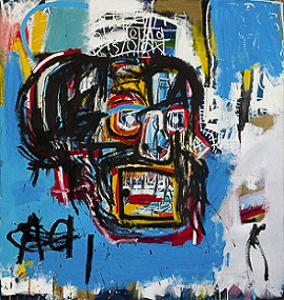
Jean-Michel Basquiat, (1960 to 1988)
1982, “Untitled” skull painting
Although I have not seen many (any?) of these works first-hand, I appreciate their importance and Basquiat’s role in neoexpressionism.
